Results 10,271 to 10,280 of 12096
Thread: Anandtech News
-
01-23-20, 10:23 AM #10271
Anandtech: USB 3.2 Gen 2 Portable SSDs Roundup - Featuring the Samsung T7 Touch and t
External bus-powered storage devices have grown in storage capacity as well as speeds over the last decade. Palm-sized flash-based storage devices with a Thunderbolt 3 interface are capable of delivering 2GBps+ speeds, while the USB-based mainstream market has moved on to to 1GBps+ offerings in the last year. In today's review, we take a look at a number of different bus-powered USB 3.2 Gen 2 storage devices featuring NVMe SSDs, including the Samsung Portable SSD T7 Touch and the SanDisk Extreme Pro Portable SSD.
More...
-
01-23-20, 04:07 PM #10272
Anandtech: ASML Ramps Up EUV Scanners Production: 35 in 2020, Up to 50 in 2021
ASML shipped 26 extreme ultraviolet lithography (EUVL) step-and-scan systems to its customers last year, and the company plans to increase shipments to around 35 in 2020. And the ramp-up won't stop there: as semiconductor fabs ramp up their own usage of EUV process technologies, they are going to need more leading-edge equipment, with ASML expecting to sell up to 50 EUVL scanners in 2021.
With 26 EUV scanners sold last year, ASML did not quite meet its goal of selling (which means building and installing) 30 EUV production tools in 2019. Nonetheless, it is still considerably higher than 18 EUV tools shipped in 2018. In the Q4 2019 alone, ASML shipped eight EUV machines, and received orders for nine more, which is a good indicator that demand for EUV tools is growing as semiconductor makers adopt EUVL for high-volume manufacturing (HVM) using their 5 nm and 7 nm nodes.
What is no less important than record EUV shipments is that in 2019 the company deployed six Twinscan NXE: 3400C scanners that can process more than 170 300-mm wafers per hour (up from 125 WPH – 155 WPH in case of the NXE: 3400B) and which use the latest light source from Cymer. The final configuration of the Twinscan NXE: 3400C will cost about 30% more than the NXE: 3400B, which will (among other things) help to drive ASML’s EUV revenue from €2.8 billion in 2019 to €4.5 billion in 2020.
One of ASML’s complications though is that because demand for EUV scanners consistently outpaces supply, the company cannot meet its own sales goals. In 2018 the company shipped 18 EUV scanners, two short of its goal of 20. And in 2019 it missed its own target by four units, which slipped to 2020 ‘due to temporary supply constraints in the NXE:3400C ramp’ and are now a part of this year’s target. In fact, some market observers estimate that ASML may have a backlog of as many as 49 EUV scanner orders.ASML's EUV Shipments 2018 2019 2020 2021 Actual 18 26 35 45 - 50 Target 20 30 ? ?
ASML believes that in a bid to meet its EUV shipments targets for 2020 and 2021, it will have to increase its output capability by reducing its cycle time for EUV tools because lead time reduction takes longer. The company is confident that it can increase its output capability to ‘above 50’, though to go above 60 it will have to use its production facility currently constructed for high-NA (0.55 NA) to build its EUV low-NA (0.33 NA) tools. Considering that high-NA scanners are years away, the decision may be instrumental, but will require additional investments.
Peter Wennink, CEO of ASML, said the following:Related Reading:
In EUV, it was a breakthrough year with the technology now starting in high volume production and producing consumer products that are available in the market. As we continue to execute on our accelerated EUV roadmap, we were able to ship our first NXE:3400C in 2019, which provides higher productivity, translating to increased customer value, delivering higher ASP and improved gross margins. We shipped six 3400C systems in Q4, of the eight EUV systems total we shipped in the quarter, bringing the total to 26 EUV systems and full year sales of around 2.8 billion euros in 2019.[…]
For full-year 2020, we plan for EUV sales of around €4.5 billion on 35 systems. We continue to see demand building for next years' shipments and expect a healthy order flow to continue. In order to fulfill the expected strong demand increase, we are working on cycle time reduction to enable a capacity of 45-50 systems next year. 2021 is shaping up to be a very busy year.
- EUV Wafers Processed and TwinScan Machine Uptime: A Quick Look
- ASML to Ship 30 EUV Scanners in 2019: Faster EUV Tools Coming
- TSMC: 5nm on Track for Q2 2020 HVM, Will Ramp Faster Than 7nm
- Intel: EUV-Enabled 7nm Process Tech is on Track
Sources: ASML, WikiChip, SeekingAlpha
More...
-
01-23-20, 04:07 PM #10273
Anandtech: MSI’s Optix MAG342CQR Ultra Curved Monitor: 34 Inch & 144Hz with a 1000R C
Having entered the market for gaming displays not so long ago, MSI is certainly not afraid of experimenting with various technologies in a bid to address niches that are not yet crowded with competitors. At CES, the company demonstrated its aggressively curved Optix MAG342CQR monitor that also boasts a 144 Hz variable refresh rate as well as quantum dot backlighting enhancements for accurate colors and a wider color gamut.
The MSI Optix MAG342CQR display uses a 34.5-inch Super PVA panel featuring a 3440x1440 resolution, a 21:9 aspect ratio, a 1 ms response time, and maximum refresh rate of 144 Hz. The key characteristic of this panel is its aggressive curvature of a 1000R radius, which MSI promotes as being the most optimal curvature, matching the curvature of the human eye.
The Optix MAG342CQR comes with a LED backlighting enhanced with quantum dots that improve color accuracy and ensures that the monitor can accurately display 1.07 billion colors. At the moment, MSI does not disclose which color gamuts will be supported by the display, but we are almost certainly talking about the sRGB and DCI-P3 spaces.
Traditionally for contemporary gaming displays, the MSI Optix MAG342CQR support VESA’s Adaptive-Sync variable refresh rate technology, so it is logical to expect the monitor to gain AMD’s FreeSync and NVIDIA’s G-Sync Compatible certifications by the time of its commercial launch later this year.
One of the interesting things to note about MSI’s Optix MAG342CQR is that it is based on a Super PVA panel made by Samsung Display, according to TFT Central. Samsung itself introduced its own lineup of ultra-curved displays featuring a 1000R curvature at CES, but its family does not include a 21:9 34-inch LCD just yet, so MSI currently has the world’s only 34-inch monitor with a 1000R curvature.
MSI plans to ship its Optix MAG342CQR sometimes in Q2 or Q3 this year, but does not have a firm launch date just yet.
Related Reading:
- Samsung’s Odyssey Continues: Ultra-Curved QLED 49-Inch 240 Hz HDR1000 Monitor w/ Adaptive Sync
- MSI Reveals Optix MEG381CQR 37.5-Inch HDR600 144 Hz Curved Monitor
- MSI’s 49” Optix Curved Display and Oculux 25” High Refresh Monitors Announced
Source: MSI, TFT Central
More...
-
01-23-20, 10:16 PM #10274
Anandtech: Intel Q4 FY 2019 Results: Record Quarter, Record Year
Today Intel announced their earnings for the fourth quarter of their 2019 fiscal year. In terms of revenue, Intel had their highest ever Q4 revenue, coming in at $20.2 billion, and the full 2019 fiscal year, which was $72 billion. On a year-over-year basis, the results were up 8% and 2% respectively. Intel’s margins did slip a bit though, falling 1.4% to 58.8% of revenue. Operating income for the quarter was $6.8 billion, up 9% from last year, and net income was up 33% to $6.9 billion. This resulted in earnings-per-share of $1.58, up 40% from a year ago.
Intel’s Client Computing Group, or CCG, had revenues of $10.0 billion for the quarter, up 2% from a year ago. Intel attributes the growth to modem sales and desktop platform volume. Intel is of course moving out of the 5G modem business, but will maintain its other connectivity offerings in the CCG such as their Wi-Fi products. Notebook platform volumes were down 1% in this quarter, with average selling prices staying flat, but desktop platform volumes were up 7%, but average selling prices fell 4%. Intel has said that they are expecting their chip shortage to be over by the end of this fiscal year.Intel Q4 2019 Financial Results (GAAP) Q4'2019 Q3'2019 Q4'2018 Revenue $20.2B $19.2B $18.7B Operating Income $6.8B $6.4B $6.2B Net Income $6.9B $6.0B $5.2B Gross Margin 58.8% 58.9% 60.2% Client Computing Group Revenue $10.0B +3% +2% Data Center Group Revenue $7.2B +12% +19% Internet of Things Revenue $1.16B +16% +16% Mobileye Revenue $229M +14% +20% Non-Volatile Memory Solutions Group $1.2B -7.7% +10% Programmable Solutions Group $505M flat -17%
Intel’s Data Center Group had revenue of $7.2 billion, up 19% from a year ago. Data Center sold 12% more unit volume this quarter than Q4 2018, and also added in 5% more average selling price per unit, so Intel’s DCG group is still very healthy.
Internet of Things, which include Mobileye, achieved revenue of $1.16 billion, up from $999 million a year ago. IoT was up 13%, accounting for $920 million of that revenue, and Mobileye was up 31% to $240 million.
Non-volatile Storage had revenue of $1.2 billion for the quarter, up 10% from a year ago which Intel is attributing to both NAND and Optane bit growth.
Programable Storage was the one area where Intel had a revenue drop, falling 17% year-over-year to $505 million, with no explanation given, but clearly FPGAs were in shorter demand.
Looking ahead to Q1 2020, Intel is expecting approximately $19.0 billion in revenue for the quarter, with earnings-per-share of $1.23.
Source: Intel Investor Relations
Gallery: Intel Q4 FY 2019 Results: Record Quarter, Record Year


More...
-
01-24-20, 10:44 AM #10275
Anandtech: Intel Joins CHIPS Alliance, Contributes Advanced Interface Bus
Intel this week became a member of CHIPS Alliance, an industry consortium that is working to accelerate the development of open source SoCs (and SiPs) for various applications. As part of their membership, Intel has also contributed its Advanced Interface Bus to the group, giving developers access to the bus and thus the means to interoperate with Intel (and other) chips that will be using it.
Designed for use with system-in-packages (SiPs) devices, Intel’s AIB is a high-bandwidth, low-power, die-to-die PHY level standard that uses a clock forwarded parallel data transfer mechanism (akin that used by modern DDR DRAM interfaces). The technology is agnostic to manufacturing processes and packaging technology, so it can be used to connect a wide variety of chips/chiplets using different types of packages, including Intel’s own EMIB, TSMC’s CoWoS, or other 2.5D technologies from numerous vendors.
Intel’s AIB has been available to third parties on a royalty-free basis for a while now, so contributing the technology to CHIPS Alliance is the next step for Intel in increasing its adoption. By making AIB available to a very broad group of chip designers, Intel is encouraging development of an ecosystem of chiplets that can later be used with its own CPUs, GPUs, FPGAs, and other components to build special-purpose multi-die SiPs.
Now that CHIPS Alliance controls Advanced Interface Bus specification, further development of the technology will be handled by its Interconnects workgroup, which is set to begin its operations shortly. As a part of the consortium, Intel will be able to further contribute to development of AIB. Meanwhile, Intel will get a seat on the governing board of CHIPS Alliance.
Dr. Zvonimir Bandi?, Chairman, CHIPS Alliance, and senior director of next-generation platforms architecture at Western Digital said the following:
“Intel’s selection of CHIPS Alliance for the AIB specifications affirms the leading role that the organization impacts for open source hardware and software development tools. We look forward to faster adoption of AIB as an open source chiplet interface.”Related Reading:
- Intel Provides Royalty-Free License for Data Bus to DARPA’s Modular Chips Initiative
- An Interconnected Interview with Intel’s Ramune Nagisetty: A Future with Foveros
- Intel’s Xe for HPC: Ponte Vecchio with Chiplets, EMIB, and Foveros on 7nm, Coming 2021
- Intel’s EMIB Now Between Two High TDP Die: The New Stratix 10 GX 10M FPGA
- Arm Joins CXL Consortium
- AMD Joins CXL Consortium: Playing in All The Interconnects
- Compute Express Link (CXL): From Nine Members to Thirty Three
- CXL Specification 1.0 Released: New Industry High-Speed Interconnect From Intel
- Gen-Z Interconnect Core Specification 1.0 Published
Source: CHIPS Alliance
More...
-
01-24-20, 10:44 AM #10276
Anandtech: Qualcomm Announces Snapdragon 720G, 662 and 460 SoCs
Earlier this week Qualcomm has announced three new chipsets complementing their low-mid-range and low-range processor offerings, introducing the new Snapdragon 720G, 662 and 460 SoCs. The new chipsets are said to focus on emerging markets such as India and are also amongst the first to offer platform connectivity features such as the new Navigation with Indian Constellation (NavIC).
Starting off with the Snapdragon 720G, the first we note that the features of the SoC looks extremely similar to the Snapdragon 730. We never had a regular Snapdragon 720 so it’s a bit weird for Qualcomm to directly come out with a “G” version which is usually used for denominating a better GPU / gaming binned variant of an SoC.Qualcomm Snapdragon 700-Range SoCs SoC Snapdragon 710 Snapdragon 720G Snapdragon 730 CPU 2x Kryo 360 (CA75)
@ 2.2GHz
6x Kryo 360 (CA55)
@ 1.7GHz2x Kryo 465 (CA76)
@ 2.3GHz
6x Kryo 465 (CA55)
@ 1.8GHz2x Kryo 470 (CA76)
@ 2.2GHz
6x Kryo 470 (CA55)
@ 1.8GHzGPU Adreno 616 Adreno 618 DSP Hexagon 685 Hexagon 692 Hexagon 688 ISP/
CameraSpectra 250
32MP single / 20MP dualSpectra 350L
32MP single / 16MP dualSpectra 350
36MP single / 22MP dualMemory 2x 16-bit @ 1866MHz
LPDDR4X
14.9GB/s
1MB system cacheIntegrated Modem Snapdragon X15 LTE
(Category 15/13)
DL = 800Mbps
3x20MHz CA, 256-QAM
UL = 150Mbps
2x20MHz CA, 64-QAMEncode/
Decode2160p30, 1080p120
H.264 & H.265
10-bit HDR pipelinesMfc. Process 10nm LPP 8nm LPP
The Snapdragon 720G shares the same feature set as the Snapdragon 730, but comes with an extra 100MHz boost on the big cores. Other small differences between the two SoCs is Qualcomm’s description of it using a newer Hexagon 692 DSP as opposed to the 688 variant in the S730.
All in all, whilst this should be a new silicon design, in practice it feels more of a stepping variant of the Snapdragon 730.
In the Snapdragon 600 range we’ve seen a ton of releases over the last few years, which makes the new Snapdragon 662 even more weird in terms of how it’s positioned in the market. A lot like the S720G situation, the new S662 looks extremely similar to the Snapdragon 665.Qualcomm Snapdragon 600-Range SoCs SoC Snapdragon 660 Snapdragon 662 Snapdragon 665 Snapdragon 670 Snapdragon 675 CPU 4x Kryo 260 (CA73)
@ 2.2GHz
4x Kryo 260 (CA53)
@ 1.8GHz4x Kryo 260 (CA73)
@ 2.0GHz
4x Kryo 260 (CA53)
@ 1.8GHz4x Kryo 260 (CA73)
@ 2.0GHz
4x Kryo 260 (CA53)
@ 1.8GHz2x Kryo 360 (CA75)
@ 2.0GHz
6x Kryo 360 (CA55)
@ 1.7GHz2x Kryo 460 (CA76)
@ 2.0GHz
6x Kryo 460 (CA55)
@ 1.7GHzGPU Adreno 512 Adreno610 Adreno 615 Adreno 612 DSP Hexagon 680 Hexagon 683 Hexagon 686 Hexagon 685 ISP/
CameraSpectra 160
24MPSpectra 340T
25MP single / 16MP dualSpectra 165
25MP single / 16MP dualSpectra 250
25MP single / 16MP dualSpectra 250
25MP single / 16MP dualMemory 2x 16-bit @ 1866MHz
LPDDR4
14.9GB/s2x 16-bit @ 1866MHz
LPDDR4X
14.9GB/s
1MB system cacheIntegrated Modem Snapdragon X12 LTE Snapdragon X11 LTE
(Cat 12/13)
DL = 390Mbps
2x20MHz CA, 256-QAM
UL = 150Mbps
2x20MHz CA, 64-QAMSnapdragon X12 LTE
(Category 12/13)
DL = 600Mbps
3x20MHz CA, 256-QAM
UL = 150Mbps
2x20MHz CA, 64-QAMEncode/
Decode2160p30, 1080p120
H.264 & H.2651080p60
H.264 & H.2652160p30, 1080p120
H.264 & H.265Mfc. Process 14nm LPP 11nm LPP 11nm LPP 10nm LPP 11nm LPP
The CPU and GPU configuration is said to be identical between the two chips, but then there’s some differing features such as a Spectra 340T ISP instead of a Spectra 165, as well as a Hexagon 683 versus a Hexagon 686. Admittedly, Qualcomm’s marketing naming here doesn’t necessarily mean there’s actual IP changes in the SoC, but it’s not the first time we’ve seen Qualcomm tape out almost identical SKUs over time.
A more notable difference in capabilities is in the media features as the S662 is only able to do 1080p60 video as opposed to 4K30 on the S665, as well as having a slightly worse X11 modem which can only do 2x carrier aggregation as opposed to 3x for the S665 X12 based modem.
Actually, the biggest news this week was the announcement of the Snapdragon 460. Unlike the less exciting 720G and 662, the 460 represents a big leap over its predecessors, finally representing a major upgrade to the 2017 Snapdragon 450.Qualcomm Snapdragon 400-Range SoCs SoC Snapdragon 439 Snapdragon 450 Snapdragon 460 CPU 4x CA53
@ 2.2GHz
4x CA53
@ 1.7GHz8x CA53
@ 2.3GHz4x Kryo 240 (CA73)
@ 1.8GHz
4x Kryo 240 (CA53)
@ ?GHzGPU Adreno 505 Adreno 506 Adreno 610 DSP Hexagon 536 Hexagon 546 Hexagon 683 ISP/
CameraSpectra
21MP single / 8MP dualSpectra
21MP single / 13MP dualSpectra 340
36MP single / 22MP dualMemory 1x 32-bit @ 933MHz
LPDDR3
7.4GB/s2x 16-bit @ 1866MHz
LPDDR4X
14.9GB/sIntegrated Modem Snapdragon X6 LTE
(Category 4/5)
DL = 150Mbps
2x10MHz CA, 64-QAM
UL = 75Mbps
1x10MHz CA, 64-QAMSnapdragon X9 LTE
(Category 7/13)
DL = 300Mbps
2x20MHz CA, 64-QAM
UL = 150Mbps
2x10MHz CA, 64-QAMSnapdragon X11 LTE
(Cat 12/13)
DL = 390Mbps
2x20MHz CA, 256-QAM
UL = 150Mbps
2x20MHz CA, 64-QAMEncode/
Decode1080p30
H.2641080p60
H.264 & H.265Mfc. Process 12nm LPP 14nm LPP 11nm LPP
The Snapdragon 460 for the first time now brings big CPU cores into the 400-range which should be almost a 2x increase in performance over past series chipsets. Qualcomm here is making use of 4x Cortex A73 derived CPUs at up to 1.8GHz, alongside 4x A53 derived CPUs at an undisclosed clock (likely a similar 1.8GHz).
The GPU sees a big upgrade in transitioning to the 600 Adreno series with the Adreno 610, and Qualcomm is quoting a 60-70% performance uplift compared to the Snapdragon 450.
The new chip also now for the first time support LPDDR4X, doubling up on the available bandwidth in this low-range of SoCs. The new chipset is manufactured on a Samsung 11LPP process node, which should be a nice efficiency upgrade over the 14nm process of the S450.
Devices based on the Snapdragon 720G are expected to be available this quarter, while 662 and 460 devices are expected towards the end of 2020.
Related Reading:- The Snapdragon 865 Performance Preview: Setting the Stage for Flagship Android 2020
- Qualcomm Announces Snapdragon 865 and 765(G): 5G For All in 2020, All The Details
- Qualcomm Announces Snapdragon 665 & 730 Platforms: 11 & 8nm
- Qualcomm Announces Snapdragon 450 Midrange SoC
More...
-
01-24-20, 05:00 PM #10277
Anandtech: Big & Fast: 17.3-Inch 240 Hz ASUS ROG Strix XG17AHPE Portable USB-C Gaming
With over half of a dozen external displays for laptops in its lineup, ASUS is a company that takes portable monitors seriously. Following that philosophy, this week the company introduced its rather unique ROG Strix XG17AHPE external LCD, a gaming-focused display offering a Full-HD resolution as well as a 240 Hz refresh rate with variable refresh support. The portable monitor even has its own battery, so it will provide a premium gaming experience even away from a power outlet.
The ASUS ROG Strix XG17AHPE portable display uses a 17.3-inch IPS panel with a 1920×1080 resolution and features a maximum brightness of 300 nits, a 1000:1 contrast ratio, a 3 ms GtG response time, and a maximum refresh rate of 240 Hz refresh rate with VESA’s Adaptive-Sync variable refresh rate technology on top of that. Traditionally for ASUS’s gaming monitors, the ROG Strix XG17AHPE supports GamePlus and GameVisual modes for various genres and types of content, Shadow Boost feature to lighten dark areas in games, and GameFast input technology. The LCD also comes with a stand that can be used to mount the display horizontally or vertically.
The ROG Strix XG17AHPE is aimed at gamers who want to have a bigger screen to play on while they are travelling, offering an expanded window into virtual worlds for a notebook, console, or even a smartphone. For example, there are 15.6-inch laptops with GPUs powerful enough to push games to 240 FPS, but these games will certainly look better on a larger monitor. Also, it can be used to expand screen real estate of a high-end 17.3-inch laptop (and play in a ’32:9’ aspect ratio). In a bid to further improve gaming experience, the portable display has a built-in ESS Sabre 9118 digital-to-analogue (DAC) for headphones and integrated 1W speakers.Specifications of the ASUS ROG 17.3-Inch
Portable USB-C MonitorROG Strix XG17AHPE Panel 17.3" IPS Native Resolution 1920 × 1080 Maximum Refresh Rate 240 Hz Response Time 3 ms GtG Brightness 300 cd/m² Contrast 1000:1 Viewing Angles 178°/178° horizontal/vertical Pixel Pitch 0.1995 mm² Pixel Density 127.3 ppi VRR VESA Adaptive-Sync Color Gamut Support ? Inputs USB-C
Micro HDMI 2.0Audio Built-in ESS Sabre 9118 DAC
Stereo 1W speakersLaunch Price ?
The 17.3-inch portable display from ASUS ROG connects to its host system using a USB Type-C (with DP Alt Mode) or a Micro HDMI 2.0 connector and uses another Type-C port for charging. The monitor has its own 7800 mAh battery that provides up to 3.5 hours of gaming when using a 240 Hz refresh rate.
Otherwise as the display is based on a 17.3-inch panel, the ROG Strix XG17AHPE is not exactly a small device by itself, buyers are typically going to want an appropriate bag. Thankfully, the monitor is fairly thin and light itself; it measures 1 cm thick and weighs 1060 grams.
The external monitor is listed at ASUS’s website, so expect it to be available in the foreseeable future. Unfortunately, pricing has yet to be disclosed.
Related Reading:
- CES 2020: ASUS Reveals Portable 15.6-inch ZenScreen MB16ACE USB-C Monitor
- MSI Preps 240 Hz Optix MAG161 External Monitor for Laptops
- Lenovo's New 595-Gram Portable Display: The ThinkVision M14 USB-C Monitor
Source: ASUS
More...
-
01-27-20, 06:36 PM #10278
Anandtech: Corsair Unveils New iCUE RGB Pro XT Liquid CPU Coolers: 240, 280 & 360mm
One of the most predominant brands in cooling and peripherals market, Corsair, has unveiled its latest range of AIO CPU coolers at CES. The iCUE RGB Pro XT range is available in three different sizes. Each version comes supplied with Corsair's ML Series PWM fans and has RGB LEDs on the pump which can be controlled by its iCUE RGB utility.
Consisting of three different models, the Corsair iCUE RGB Pro XT range of liquid coolers supports a wide variety of platforms including Intel's LGA115x desktop sockets with support for socket 2011/2066, as well as AMD's desktop AM4, AM3, AM2, and its HEDT TR4 socket. Each cooler has 16 addressable RGB LED's integrated into the pump which can be controlled using Corsair's iCUE RGB software.
The Corsair iCUE H100i RGB Pro XT comes with a 240 mm radiator and is supplied with two Corsair ML120 120 mm PWM cooling fans. Moving up the range, the slightly larger iCUE H115i RGB Pro XT has a 280 mm radiator has two Corsair ML140 PWM fans to keep it cool. The biggest model of the trio is the iCUE H150i RGB Pro XT cooler with its large 360 mm radiator, and three ML120 PWM 120 mm cooling fans. The Corsair PWM ML120 mm fans have a dynamic range of between 400 and 2400 rpm, while the ML140 fans spin between 400 and 2000 rpm.
The 240 mm version has an MSRP of $120, while the 280 mm costs slightly more at $140. The triple-fan 360 mm version has a current MSRP of $160, and all three models are available to purchase directly from Corsair, and at major retailers.
Gallery: Corsair Unveils New iCUE RGB Pro XT Liquid CPU Coolers: 240, 280 & 360mm





More...
-
01-27-20, 06:36 PM #10279
Anandtech: QNAP Launches Two Bay TS-251D NAS: Gemini Lake, HDMI, PCIe Expandability
QNAP has announced its new budget-friendly two-bay NAS aimed at home users and supporting hardware-accelerated media playback. The TS-251D can store up to 32 TB of data using today’s hard drives and can be further expanded with a PCIe card to add SSD caching or other options.
The QNAP TS-251D NAS is based on Intel’s dual-core Celeron J4005 processor with UHD 600 Graphics core and hardware decoding for multiple modern video codecs. The SoC is accompanied by 2 GB or 4 GB of DDR4 memory that can be expanded by the end user. The NAS has two bays that can support 2.5-inch or 3.5-inch HDDs or SSDs with a SATA 6 Gbps interface, though RAID modes are not supported. The unit has one GbE port, one HDMI 2.0 output, two USB 3.0 ports, three USB 2.0 connectors, and an IR sensor for an optional remote.
The key feature of the QNAP TS-251D is its PCIe 3.0 x4 slot that can be used to install one of the company’s expansion cards, including the following:
- The QNAP QXG: a 10GbE/5GbE network adapter.
- The QM2: a card with an M.2-2280 slot for an SSD and a 10 GbE interface.
- The QNAP QWA-AC2600: a Wi-Fi 5 card with an additional USB 3.1 Gen 2 port.
The QNAP TS-251D NAS runs the company’s QTS 4.4.1 operating system and supports a variety of client OSes, including Apple macOS 10.7 and later, Microsoft Windows 7 and later, Microsoft Windows Server 2003 and later, as well as Linux/Unix.
QNAP’s TS-251D NAS for home users will be available shortly. Prices were not touched upon.
Related Reading- QNAP Unveils HS-453DX Silent NAS: Two HDDs, Quad-Core SoC, HDMI 2.0, 10 GbE
- QNAP Announces TS-332X Three-Bay NAS with 10 GbE
- Thecus Announces $130 and $200 Entry-Level NASes For Home Users
Source: QNAP
More...
-
01-28-20, 12:03 PM #10280
Anandtech: VAIO Launches SX12: A 12.5-Inch Ultralight Laptop with a Six-Core Comet La
VAIO has unveiled a new version of its SX12 laptop that is powered by Intel’s Comet Lake processor, offering SKUs with up to six CPU cores. The miniature notebook weighs less than a kilogram and should not only offer decent performance, but also has a vast set of connectors as well as an optional 4G/LTE modem.
To minimize its weight and dimensions, the VAIO SX12 comes in an enclosure that is made of carbon fiber and plastic. As a result, the machine weighs just 906 grams and is 15.7 mm ~ 18 mm thick. The notebook features a Full-HD display with very thin bezels that allowed VAIO to install a 12.5-inch screen into an 11-inch-class chassis. Furthermore, the company has managed to equip its SX12 with a keyboard featuring a 19-mm pitch.
The 2020 VAIO SX12 is based on Intel’s 10th Generation Core i5-10210U and Core i7-10710U processors, which offer four or six CPU cores as well as built-in UHD Graphics. The CPU is paired with 8 GB of LPDDR3 memory as well as a 256 GB SSD with a PCIe or SATA interface. Like other PCs from VAIO, the new SX12 fully supports the company’s TruePerformance technology that combines an advanced cooling system as well as increased CPU power limits in order to enable the CPU to work at higher clocks for a longer time.
Like previous-generation VAIO SX12, the new notebook has a set of connectors typically not found on 12-inch class machines. In particular, the laptop has GbE, a USB 3.1 Gen 2 Type-C (can be used for data, display, and charging) port, one USB 3.1 Gen 2 Type-A connector, two USB 3.0 Type-A ports, an SD card reader, two display outputs (HDMI, D-Sub), a 3.5-mm audio jack, and a proprietary power port. As for wireless technologies, the notebook is equipped with a Wi-Fi 5 + Bluetooth 4.1 controller as well as an optional 4G/LTE modem. In addition, it has a webcam with IR sensors for face recognition, a fingerprint reader, stereo speakers, and a microphone.
VAIO says that the SX12 can work for 13.2 – 13.5 hours on one charge, but does not disclose exact capacity of the battery. Meanwhile, the system can be charged using a proprietary power brick, or a standard USB-C charger.
The new VAIO SX12 laptops will be available in five colors, including black, silver, brown, pink, and red for a custom special edition model. In Japan, the new PCs will cost ¥197,800 - ¥242,800 depending on configuration. Unfortunately, it is unclear when the new SX12 is set to become available in the US, if at all.VAIO SX12 (VJS1211) General Specifications VJS12290111B
BlackVJS12290211B
BlackVJS12290311B
VJS12290411T
BrownDisplay 12.5" anti-glare panel with 1920×1080 resolution SoC Core i7-10710U
(6C/12T, 1.1 ~ 4.7 GHz)Core i5-10210U (4C/8T, 1.6 ~ 4.2 GHz) RAM 8 GB LPDDR3 Storage 256 GB NVMe 256 GB SATA Wireless 802.11ac Wi-Fi
Bluetooth 4.1
Optional 4G/LTE modem802.11ac Wi-Fi
Bluetooth 4.1I/O ports GbE
1 × USB 3.1 Gen 2 Type-C
1 × USB 3.1 Gen 2 Type-A
2 × USB 3.0 Type-A
HDMI
D-Sub
SD Card reader (UHS-I)Camera 720p webcam Audio Integrated speakers
1 × TRRS 3.5-mm jack for headsetDimensions 287.8 × 203.3 × 15.7 ~ 18 mm Weight 887 ~ 906 grams Battery 13.2 ~ 13.5 Hours OS Windows 10 Fingerprint Yes Availability January 2019
Related Reading:
- VAIO’s 2-Pound 12.5-Inch Laptop Weds Miniature Dimensions & Vast Connectivity
- VAIO S Laptops Updated With 8th Gen Core CPUs & TruePerformance to Prolong Turbo Time
- Dynabook Presents ‘Hyper-Light’ 13.3-Inch Portégé X30L-G Laptop with 6-Core CPU
- CES 2020: HP’s Spectre x360 15 Gets Comet Lake, Goes on Diet, Gains 17 Hrs Battery Life
Sources: VAIO, PC Watch
More...
Thread Information
Users Browsing this Thread
There are currently 16 users browsing this thread. (0 members and 16 guests)





 Quote
Quote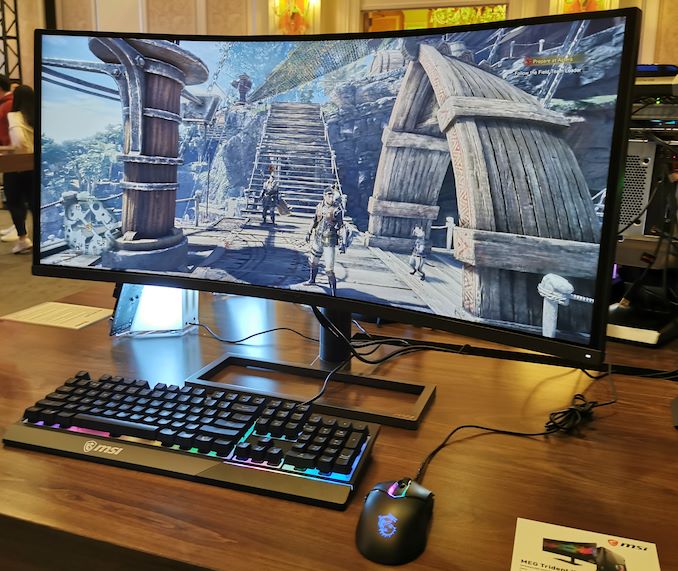
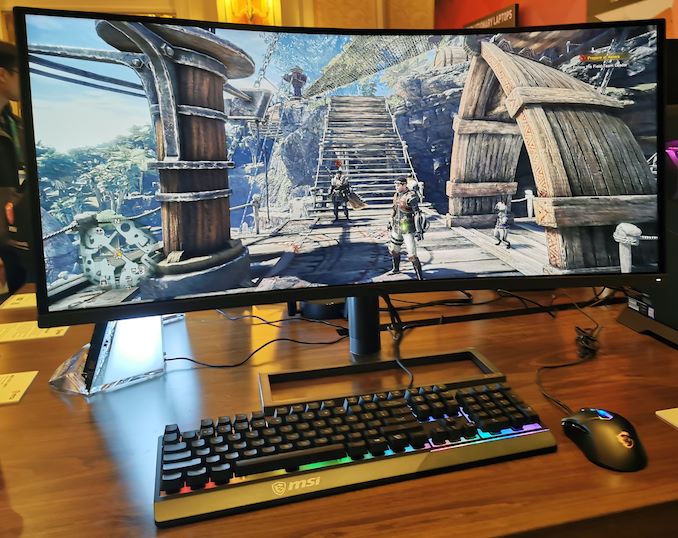
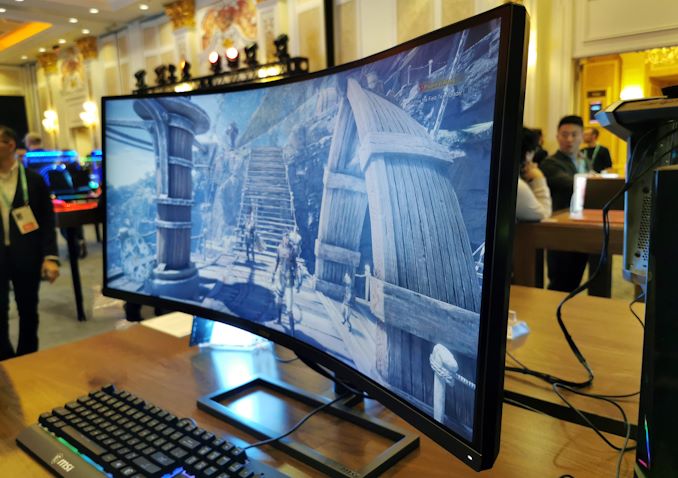
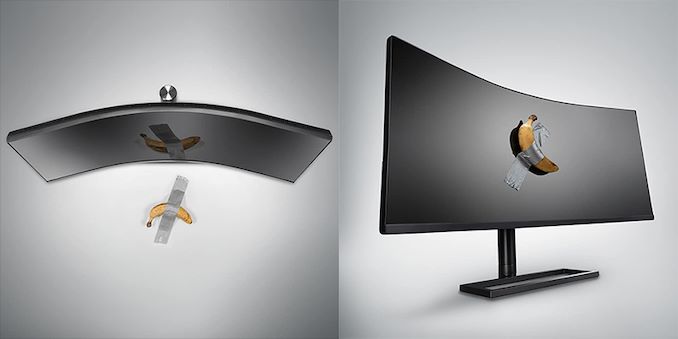

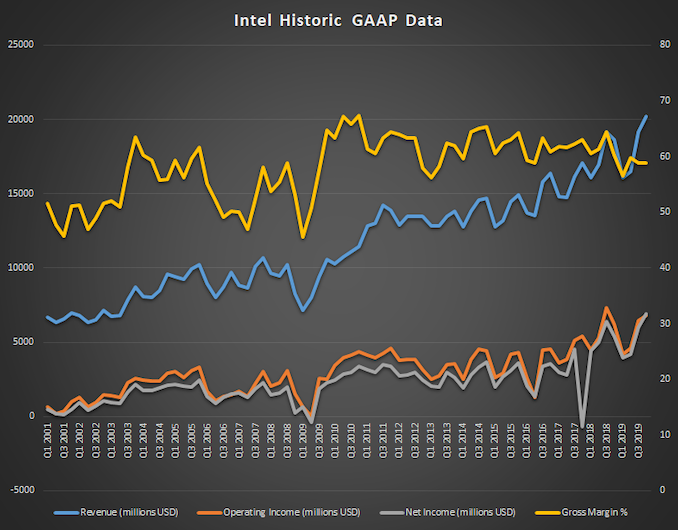
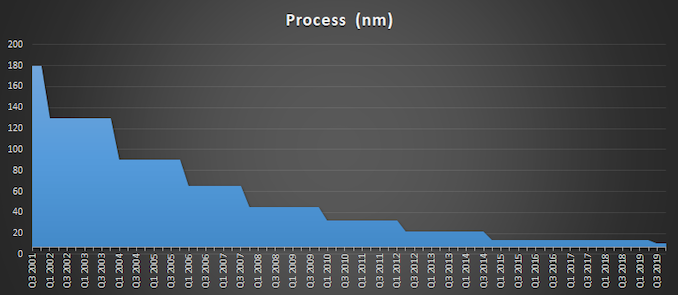
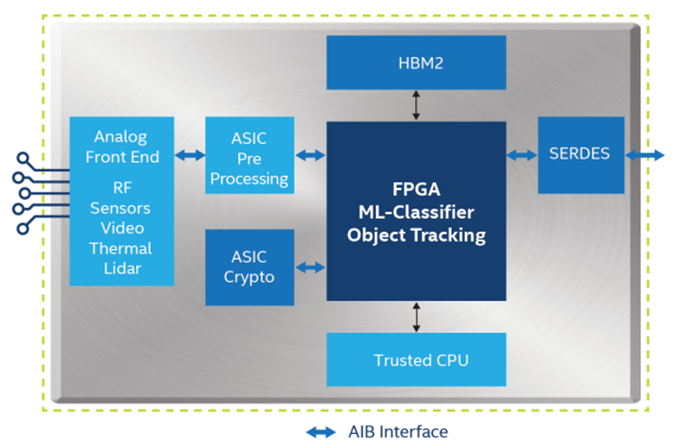
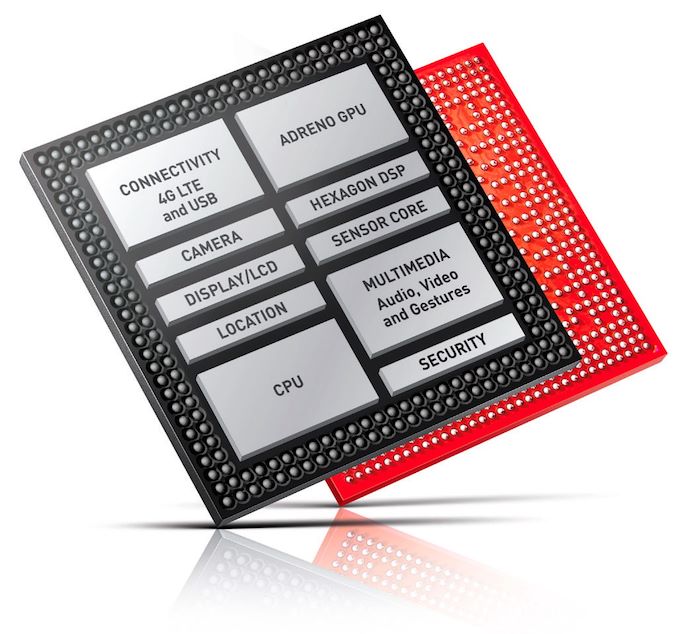
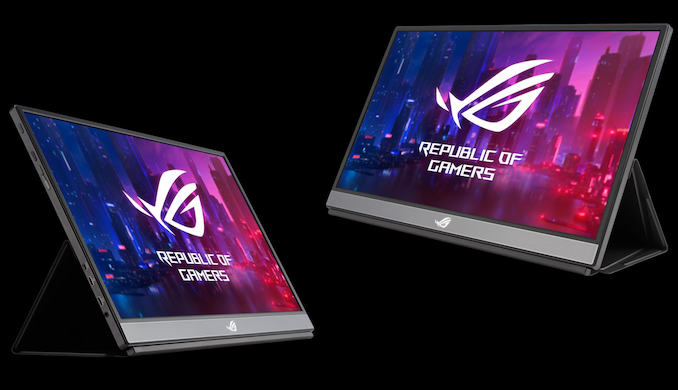
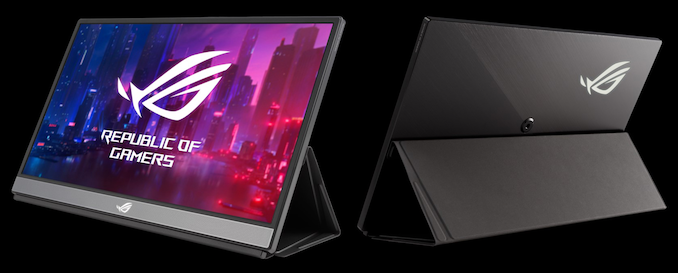
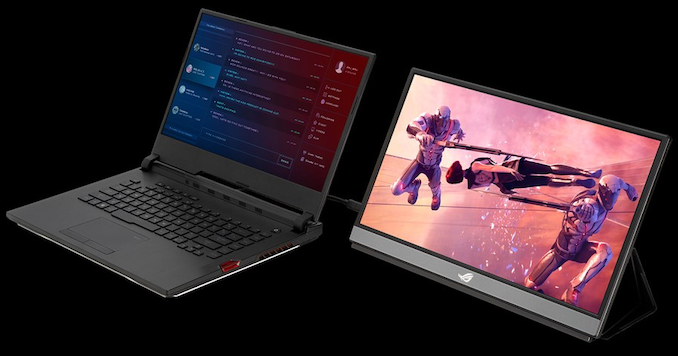
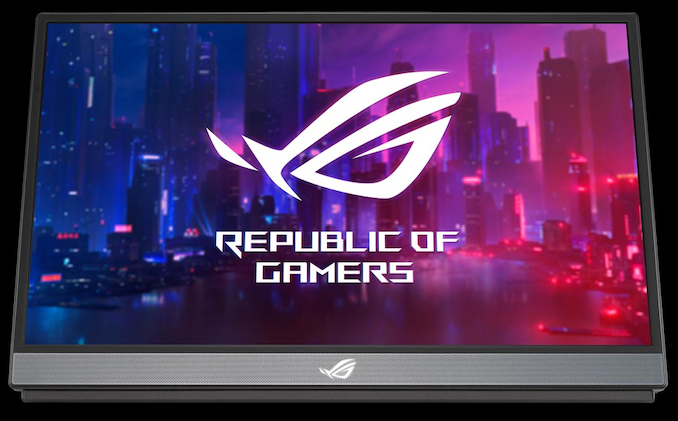
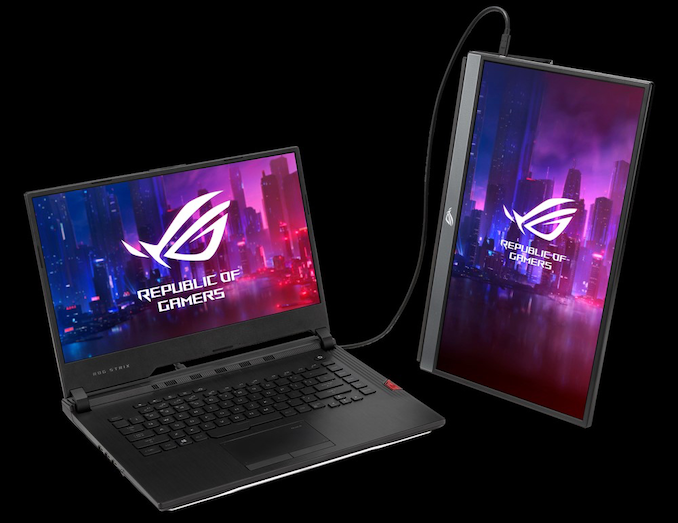
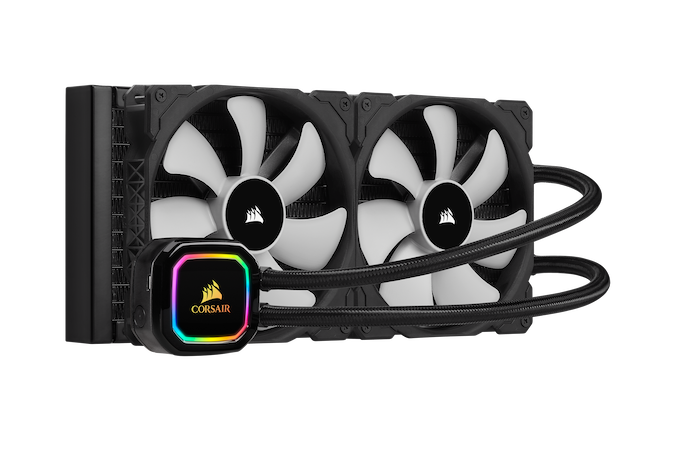
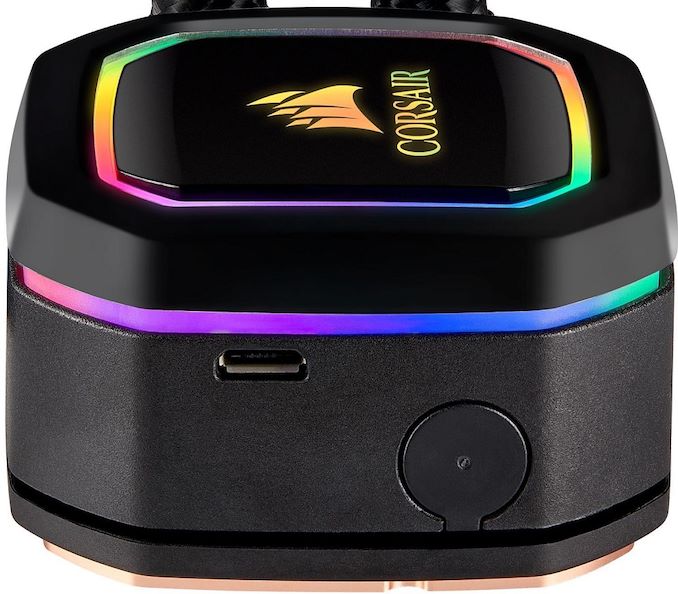
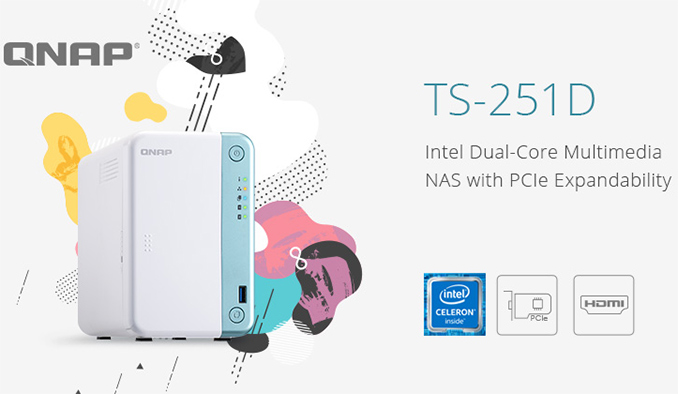
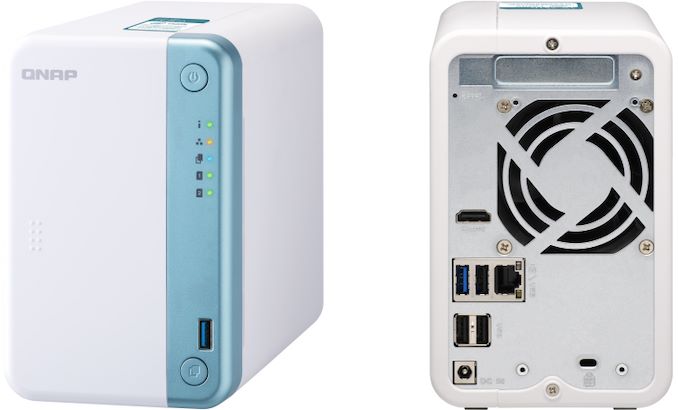
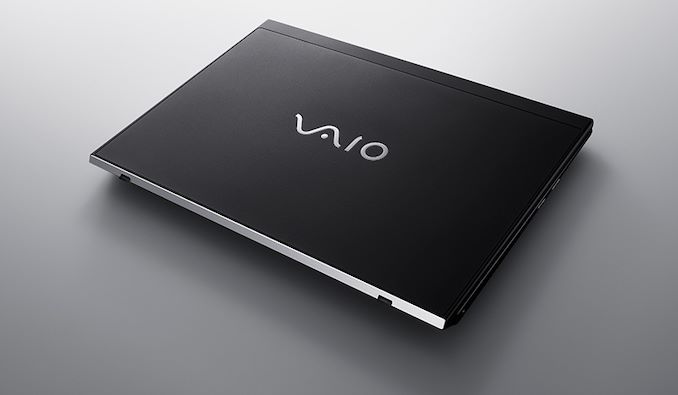
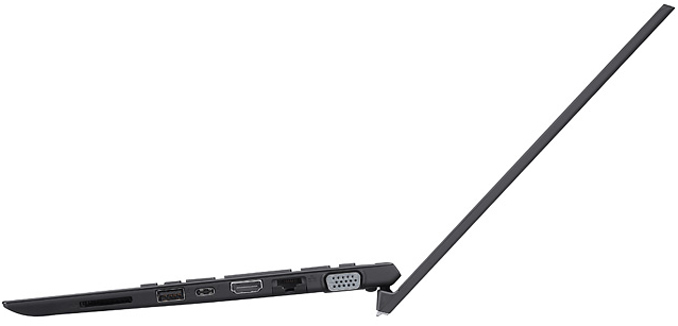
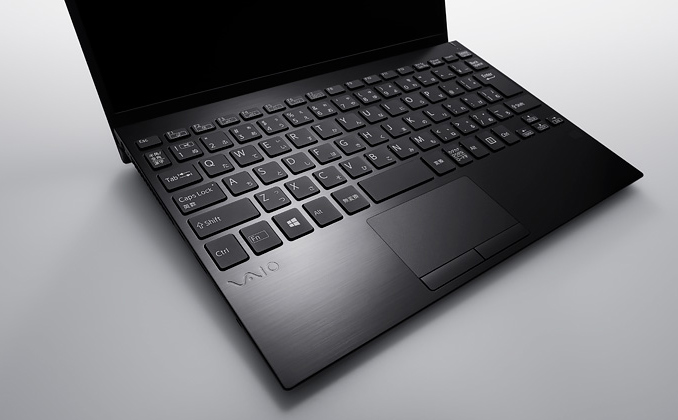

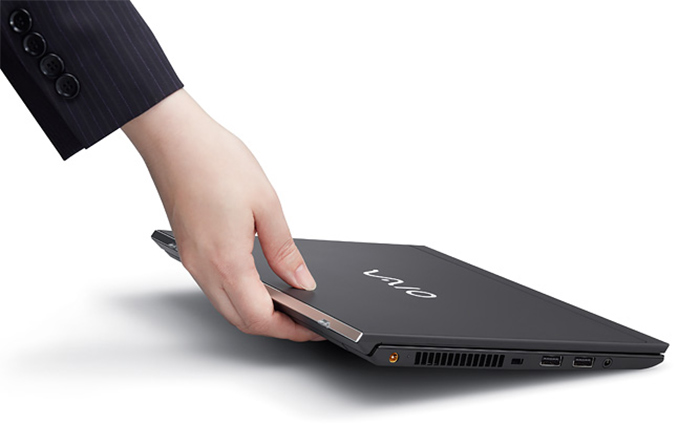
















Bookmarks